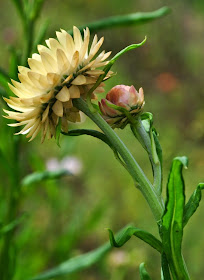
The search for something beautiful to photograph invariably takes me to the Toronto Botanical Garden each fall.
The Entry Walk Garden by renowned Dutch landscape designer Piet Oudolf is always at its best at this time of year. No matter how many times I visit, it never fails to inspire me.

In the past, I was never a fan of the contemporary landscape design that I found in large gardens and public spaces. It seemed to rely too much on elaborate hardscaping and modern art pieces for its drama. Plants always seemed relegated to a supporting role.
Part of Piet Oudolf's genius has been to shift the focus back on the plants themselves. A proponent of the naturalistic movement in landscape design, Oudolf is known for incorporating native plants and grasses into gardens reminiscent of wildflower meadows.

The Entry Walk at the Toronto Botanical Garden was Oudolf's first project in Canada.
The commission was not without its challenges. The Entry Walk is not a big space- you can walk its length in a manner of minutes. Located opposite the main parking lot, it's not ideally situated either.
But the tall grasses and the huge stands of Joe Pye Weed Oudolf has incorporated in the Entry Walk's design have a way of enclosing the space, and despite its awkward location, you feel as though you are in a world apart when you are in the garden.
Let's take a look:
The commission was not without its challenges. The Entry Walk is not a big space- you can walk its length in a manner of minutes. Located opposite the main parking lot, it's not ideally situated either.
But the tall grasses and the huge stands of Joe Pye Weed Oudolf has incorporated in the Entry Walk's design have a way of enclosing the space, and despite its awkward location, you feel as though you are in a world apart when you are in the garden.
Let's take a look:
As you will see in my pictures, a striking silhouette is key consideration in Oudolf's plant selection.
Joe Pye Weed, Eupatorium purp. maculatum: Joe Pye Weed can grow to incredible heights and has large rose flower heads in late summer/early autumn. Tough it likes moist or wet, boggy conditions, it still manages to grow well in the Entry Walk's somewhat dryer soil. Full sun or light shade. Height: 210-300 cm (82-117 inches), Spread: 90-120 cm (40-50 inches). Hardy USDA Zones: 3-9 (Note: If you have a smaller garden, you may want to consider Baby Joe Pye Weed, Eupatorium dubium 'Baby Joe'.)
A Monarch Butterfly visiting a Joe Pye Weed flower.
There are no identification tags in this part of the garden, but I feel pretty certain this is Meadow Blazing Star or Liatris ligulistylis (not to be confused with more common Liatris spicata). Monarchs really seem to adore this plant!
Liatris ligulistylis: is a perennial native to the Canadian Prairies and blooms in late summer/early fall. Full sun or light shade. Height: Liatris ligulistylis can reach 1.2 to 1.8 m (4-6 ft), Spread: 30-38 cm (12-15 inches). Average to moist soil. Hardy USDA Zones: 3-7.
Burnet, Sanguisorbia
Perennial Fountain Grass, Pennisetum alopecuroides: has arching green foliage and soft mauve flowers that turn beige as they mature. Full sun or light shade. This is a grass that is adaptable to a range of soil types and will tolerate dry, average or moist growing conditions. Height: 90-120 cm (35-50 inches), Spread: 60-90 cm (20-35 inches). Hardy USDA Zones: 5-9
Annual Fountain Grass, Pennisetum setaceum
Clouds of Russian Sage, Perovskia atriplicifolia and Sea Holly, Eryngium
Russian Sage, Perovskia atriplicifolia: has upright greyish foliage and violet blue flowers in late summer/early fall. Bees adore it. Russian Sage prefers full sun and heat. Average to dry conditions. Height: 90-150 cm ( 35-60 inches) Spread: 60-90 cm (20-35 inches) Hardy USDA Zones: 4-9
Japanese Anemone
Japanese Anemone and Mountain Fleeceflower, Persicaria
Feathery grasses mix with Burnet, Sanguisorbia
Burnet, Sanguisorbia officinallis 'Red Thunder' (Rosaceae)
Helenium
Sea Lavender or Limonium latifolia
Verbena bonariensis and Burnet, Sanguisorbia
Verbena bonariensis: Is a drought tolerant perennial that is usually treated as an annual here in southern Ontario. It is a prolific self-seeder, and for this reason, it is often viewed a problem plant in some parts of the U.S. Butterflies and bees love it! Full sun. Height: 90-120 cm ( 36-48 inches), Spread: 38-45 cm (15-18 inches) USDA Zones 6-10
Verbena bonariensis and Mountain Fleeceflower, Persicaria

For me the delicate clouds of texture and color in Oudolf's Entry Walk Garden speak to modern design's softer side. There is nothing clean lined or hard edged here.

Unlike a traditional approach to design, individual flowers do not compete for your attention in the gardens that Oudolf creates. Instead there is a harmonious mix of lighter notes. The overall effect feels soft, pretty and playful.
I always come away inspired to loosen my grip on convention and incorporate more of the same feeling in my own garden.



































































